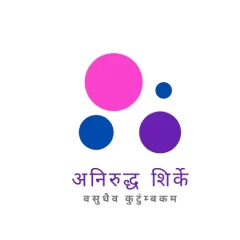
Mobile Banking services have the potential to transform the lives of millions of Indians in remote areas by providing access to financial services. India faces unique challenges in providing basic banking facilities to rural areas due to its vast and diverse nature. There are large areas without banks in these countries, which excludes millions of people from formal financial services. Implementing a ‘Digital India‘ through Mobile Banking Services can significantly enhance community participation in areas where it plays a crucial role.
The deep penetration of mobile phones in India helps in offering mobile banking services to the masses. In this article, we take a look at the significance of making mobile banking services available in India’s rural locations. Even discuss the role of communities along with customised solutions.
I. Advantages of mobile banking services
As smartphone use was extensive in almost all areas, coupled with an increased coverage of mobile networks, mobile banking services became very popular in India. This includes banking features such as balance inquiries, payments, access to loans, and many other services.
- Financial Inclusion: These solutions offer access to simple banking through mobile phones. It contributes to reducing dependence on informal financial systems and expanding financial inclusion.
- Convenience and Accessibility: It provides round-the-clock ease of access to the financial system. It gives rural customers a better experience when using mobile banking.
- Digital Literacy: Mobile banking services enhance rural communities’ digital literacy and financial education. This boosts their participation in the formal economy.
II. The Role of Community Involvement
To effectively implement and promote mobile banking in India’s rural areas, it is crucial to involve and gain community trust. Local communities get the advantages and are responsible for the sustainable development of these systems. The following points highlight the importance of community engagement:
- Trust and Acceptance: Rural communities’ involvement in mobile banking service design, testing, and deployment fosters trust and reliance within their community. They can be useful in providing services customised to local needs and desires.
- Overcoming Barriers: Communities are well equipped to identify and address local issues that hinder the adoption of mobile banking. The issues such as language barriers or inadequate infrastructure. With this knowledge in hand, they are able to design and implement new services that address these barriers.
- Promotion: Active communities can be champions for mobile banking solutions, promoting adoption among members of their community. It reaps the benefits of increasing financial inclusion.
III. Tailoring Solutions for Rural India
Every village in India has its own set of challenges and opportunities. As such, locally relevant mobile banking solutions need to be tailored. Some key considerations include:
- Infrastructure: Check the presence of a mobile network, electricity, and an internet connection.
- Language and Cultural Sensitivity: Different languages and cultures exist in rural India; acknowledge them. Ensure mobile banking interface localisation during customer services. Make sure that services are provided with cultural awareness and in the local languages.
- Financial Literacy: Educate rural populations about the benefits and responsible use of mobile banking through financial literacy programs. Such program design must include the requirements and skills of each community.
- Security and Trust: It’s essential for companies involved in collecting sensitive consumer data, such as financial information, to put in place strong safeguards to keep that data safe. Establishing trust will be key to gaining widespread acceptance of mobile banking.
By making formal financial services accessible in remote areas, mobile banking can change the lives of millions of people in India. Active participation and engagement from communities and relevant actors are crucial for community led efforts to thrive and be long lasting. We needed customised solutions for a diversity of challenges and possibilities in different areas. India can advance monetary incorporation and money related power for all nationals by prioritizing these considerations in the roll out of mobile banking.
